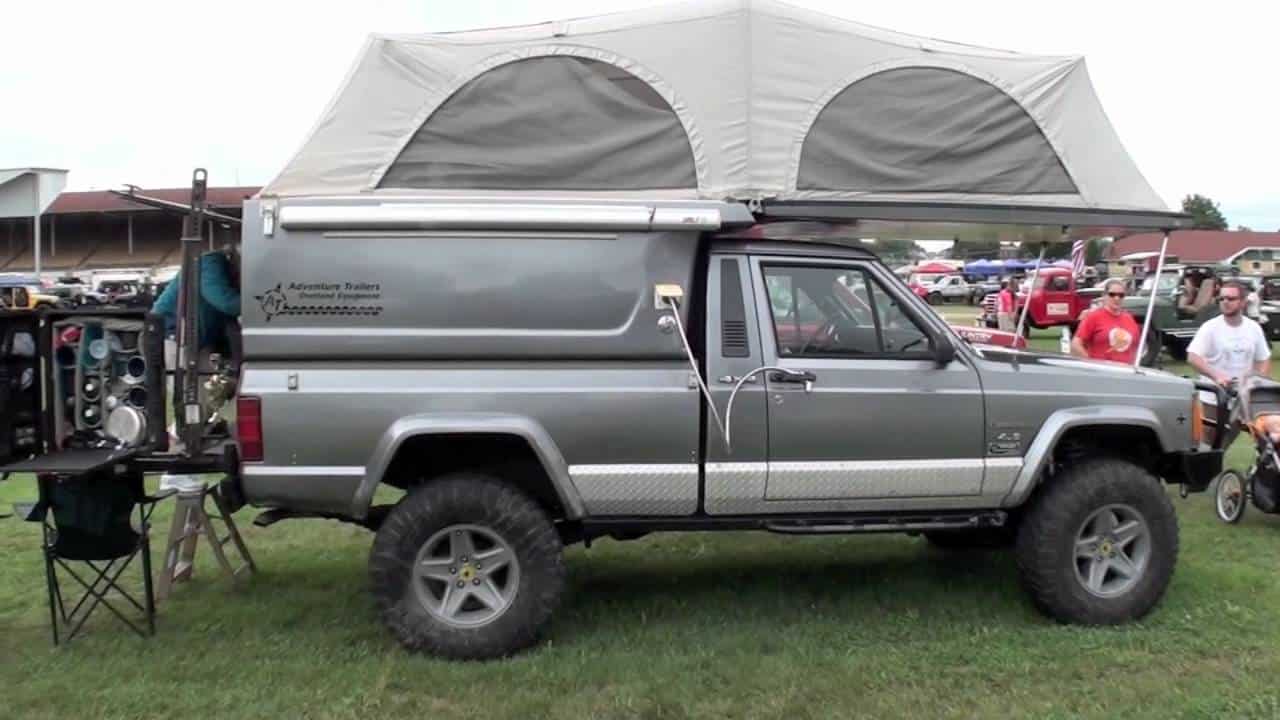A series of 8 short videos on Overland Vehicle Design by Mario Donovan from AT. Mario covers the basic thought and planning process behind designing Overland vehicles. In these videos Mario takes us through his Jeep MJ build, he starts out by discussing the overall concept, and then moves to cover individual aspects such as storage and organization, a mobile work place, light and power, water and heating, exterior storage, and the kitchen and food preservation. Mario’s experience and thoughtfulness as an Overlander are expressed in the videos, the conversation takes an around the campfire feel while being packed full of ideas and information.
Part 1
Introduction
The goal is to build a well balanced overland vehicle that is within the gross vehicle weight rating. The starting point is looking at the number of people who will be in the vehicle, how many days they will be traveling remotely, and how much fuel you need to cover the distances being traveled. The subsequent decisions are based on how you safely provide shelter, comfort, food, and water for the occupants. Finally you have to look at how all of these factors are going to effect vehicle performance, handling and fuel economy.
Part 2
Storage inside the vehicle
Whether you are storing equipment inside the bed of the truck or inside the vehicle itself everything needs to be secure and contained. It’s essential it does not move around or come loose. The basic design criteria is to allow easy access to items that you use on a frequent basis, and to store other items deeper in the vehicle while maintaining the lowest center of gravity and a balanced weight profile. Items that you want to get to quickly include the recovery gear, first aid kit, a simple tool kit, and the fridge. We also look at designing storage units in groups to provide access to sleeping areas.
Part 3
In depth look at storage
Soft storage for lighter items that we need to get to frequently can be held safely in place using cargo track and cargo netting. Soft sided storage containers and systems that can be modified and changed to suit your needs more easily than hard storage. We look at hard storage, its placement within the vehicle, and the advantages of soft sided storage to fill natural voids within the vehicle. In the bigger deeper storage units, heavier items like spare parts and tool kits are stored down low, with bedding up on top, everything is in its own container. Finally we look at storage for items you need to reach from the bedside.
Part 4
The mobile office
If the weather is good it’s always possible to set a table and chair up outside as an “office” or place to study, read and relax. If however you are confined to the interior of the vehicle due to weather or privacy concerns, you need to plan for a place to sit, a work surface, power outlets, and lighting. An inverter will allow you run a laptop and a folding chair as a comfortable place to sit. The tent structure on this vehicle allows you to do all of this out of the elements.
Part 5
Interior lighting and power
Laying out the placement of 12 Volt outlets and lighting so that you have easy access to them is essential provide adequate lighting and prevent a rats nest of power cords inside the vehicle. Plan the lay out of the lights so they cover areas where you work, read, relax and sleep . Arrange for general illumination to cover the living area as well as specific lighting for steps and drop offs. LED lights draw very little power, produce very little heat, and are available in red, white and other colors. The red light is used to maintain night vision so it’s very useful to use when entering or exiting the vehicle.
Part 6
Interior Mechanicals
The water and power units are stored inside the bed of the truck, and are placed in areas that are easily accessible. They are located to fill some of those otherwise unused voids in the vehicle. Cold water is stored in a 17 Gallon water tank filled from the exterior. Cold water is fed to an insulated heat exchanger that produces hot water, and from there to the externally mounted mixer valve. The water system works off a 12 Volt pump. All of the water is pre filtered. The “house” battery is housed in a National Luna Power Pack that functions as a self-contained power system. Solar charging is used when extended base camps or more power is required.
Part 7
Exterior Storage and equipment staging
With a corresponding exterior aircraft track the soft storage bags can be brought to the exterior and hung where needed. In the shower area, the soap, towel, and toiletries bag can be hung. In the kitchen area the soft sided bags of food can be hung on the track. The shower mixer and water filler are also located on the exterior of the vehicle allowing for access to hot and cold water in both the shower and kitchen areas.
Part 8
The Kitchen
A small self-contained kitchen located on the rear swing away allows for quick food preparation, snacks and full meals. It’s an ideal set up for the two people who use this vehicle and can be expanded upon for families and larger groups. In the event of inclement weather the awning can be deployed, or kitchen can be detached and moved inside.


